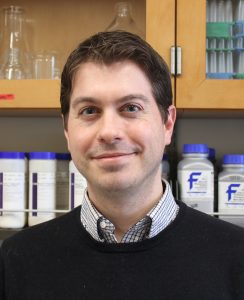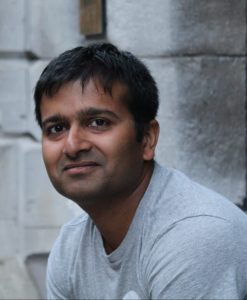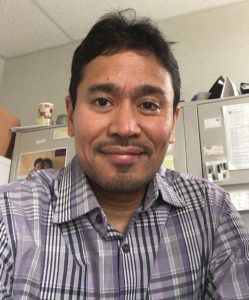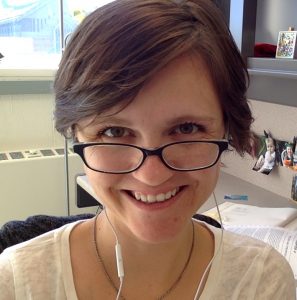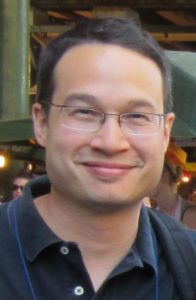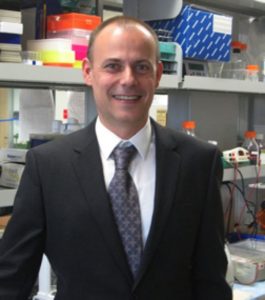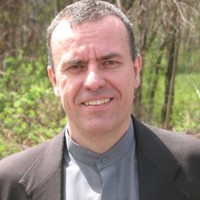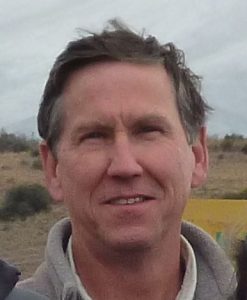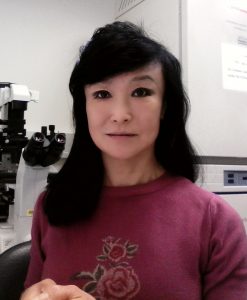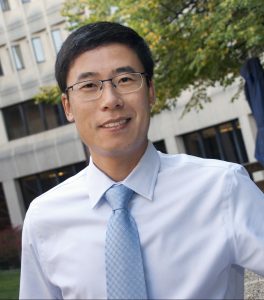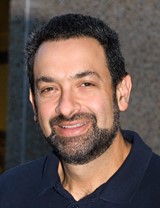
UConn School of Medicine
Immunology, Cancer, Immunotherapy, T cells
T cells can eliminate tumors, yet are typically prevented from doing so because their activity is tempered by a variety of immunosuppressive mechanisms engaged by tumors. Various immune-based therapies that neutralize these immunosuppressive mechanisms can provide therapeutic benefit to cancer patients, and combining complimentary modalities can boost efficacy. In collaboration with Dr. Anthony Vella, we use transgenic mouse and tumor model systems to develop combination immunotherapy approaches that utilize agonists to the T cell costimulatory receptors CD134 plus CD137. This “dual costimulation” programs T cells to acquire several unusual but therapeutically useful functional attributes, which we analyze using a variety cellular, molecular and biochemical approaches.
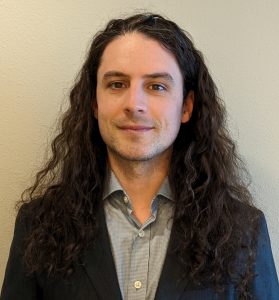
UConn
Bayesian Machine Learning, Algorithms, Computational Genomics, Haplotypes, GWAS, Alternative Splicing, Data Science
Dr. Derek Aguiar runs the Efficient Learning and Graph Algorithm Techniques for Omics (EL GATO) Lab in the Department of Computer Science and Engineering. The group’s research aims to develop probabilistic machine learning models, combinatorial algorithms, and scalable inference methods to better understand high-dimensional omics data applied to complex disease. Recent applications include non-B DNA prediction, transcript reconstruction and quantification, modelling disease risk, expression prediction, and haplotype assembly, phasing, and clustering.
UConn School of Medicine
Precision Medicine, Genomics, Health Care, Bioinformatics, Big Data, Artificial Intelligence, Software Engineering
To improve the quality and transition of healthcare, robust big data management platforms are necessary to analyze heterogeneous genomics and health care data of high volume, velocity, variety and veracity. Adequate and analytic access to the health care and genomics data has potential to revolutionize the field of medicine by developing better understanding of biological mechanisms and modelling complex biological interactions by integrating and analyzing knowledge in a holistic manner. My lab focuses on dealing practical issues associated to the scientific software solutions and infrastructure development for the complex, diverse and large scaled health care, genomics, transcriptomics and epigenomics data management, processing, analysis, visualization and integration for the precision medicine. Aims include the development of one of the world's largest precision medicine platforms to help patients, providers, practices and scientists.

The Jackson Laboratory for Genomic Medicine
Breast Cancer, Genetics and Genomics, Cancer, RNA biology, Gene Expression Regulation, Alternative Splicing
Alternative splicing is a key control point in gene expression, and its misregulation often leads to diseases; however, the role of alternative-splicing misregulation remains an underexplored area in cancer research. Our goal is to understand how splicing misregulation plays a role in breast and ovarian cancer, to identify what triggers splicing alterations in tumors, and ultimately to develop novel personalized cancer therapies. Our research is focused on bridging the gap between the fields of RNA biology and cancer research, by combining the use of large clinical datasets, disease relevant 3D organotypic cell culture and patient-derived animal models, with a range of cutting-edge techniques such as RNA-sequencing, splicing-modulation using an antisense oligonucleotide technology, high-throughput imaging and functional genomics.

UConn School of Medicine
Excitability of neurons, Dendritic Integration, Synaptic Integration, Genes in differentiating neurons, Gene regulation by electrical activity, Dopaminergic neuromodulation
Our laboratory is interested in the interaction between genes and physiology in post mitotic human neurons. More specifically, we are interested in how electrical activity regulates the expression of human genes implicated in schizophrenia and autism. In a separate project, our laboratory is using voltage imaging and calcium imaging in thin dendrites of the central nervous system neurons to study integration of electrical and calcium signals, as well as how dopamine affects these signals.

UConn School of Medicine
Molecular Oncology, Cancer Genetics, Endocrine tumors, Cell cycle, Cyclin D1, Cyclin-dependent kinases, Parathyroid neoplasia, Breast cancer
Dr. Arnold is a physician-scientist who is a recognized leader in the molecular genetics of endocrine neoplasia. Dr. Arnold’s research accomplishments in cancer genetics include discovery of the cyclin D1 oncogene and identifying the central molecular cause of parathyroid cancer. His laboratory continues to gain insight into the genetics and mechanisms underlying parathyroid gland tumorigenesis, and has an initiative in the role of cyclin D1 in breast cancer.

UConn
Computational Molecular Evolution, Computational Phylogenetics, Algorithms, Microbial Evolution
Dr. Bansal develops new computational methods, efficient algorithms, and powerful software tools to help answer fundamental biological questions. He is especially interested in problems related to understanding the evolution of genes, genomes, and species. Some specific research projects include: (1) Inferring the evolution of microbial genomes and gene families to understand how microbes evolve and adapt, (2) reconstructing highly accurate gene trees and whole-genome species trees for improving the accuracy of downstream comparative and functional genomic analyses, and (3) understanding evolution at the sub-gene/domain level.
UConn
High dimensional data, bioinformatics, statistical modeling, model selection
My research interests include statistical modeling for high-throughput data, variable selection, and missing-data problems. I am also interested in statistical methods in machine learning. I believe that interdisciplinary collaboration is key to making scientific progress, and have collaborated with researchers from diverse fields, both as a coauthor, and as a statistical consultant. I am also a firm believer that 'necessity is the mother of invention', and as a statistician this means that the best incentive to develop new methodologies is by dealing with real-life problems, which are most readily available in consultations, especially in environments with diverse research interests.
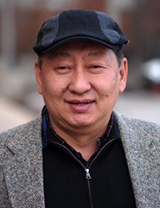
UConn School of Dental Medicine
Transcriptional Regulation, Epigenomics, Haploinsufficiency in human disease
The role of TFII-I transcription factors during embryonic development to understand the mechanisms associated with chromatin structural changes. The role of epigenetic alterations in human disease processes, particularly in relation to the copy number variations of the human genome.

UConn School of Medicine
Zebrafish, RNA biology and Developmental Biology
Our lab is interested to understand how RNA regulation orchestrates biological transitions. We aim to characterize RNA structure and functions to better understand vertebrate development and neuronal differentiation. To this end, our lab uses the zebrafish and human cell lines as model systems, and we integrate an array of approaches that includes RNA molecular biology, computational biology, high throughput sequencing, genome-engineering, genetics, and developmental biology.

UConn
Cancer, Vaccines, Immunotherapy, Immunopathology, Transcriptomics, Host-Pathogen Interactions.
My research uses next generation sequencing to characterize beneficial and maladaptive immune responses to pathogens and potential vaccines. A primary focus has been the host response to virulent and attenuated strains of Mycoplasma gallisepticum, the primary etiologic agent of chronic respiratory (CRD) in poultry. Transcriptional analyses of the host response in the tracheal mucosa have determined key regulatory changes active in either immunopathogenesis or clearance of the pathogen. More recently, RNA and whole genome sequencing is being utilized to decipher the mutanome of canine tumors to identify neoepitopes with the potential to improve the efficacy of immunotherapies and autologous vaccines.

UConn School of Medicine and The Jackson Laboratory for Genomic Medicine
Genetics and Genomics, Structural Variation, Cancer, Transposons, Computational Biology
The mechanisms governing non-recurrent human structural variation (SV) are diverse and often poorly understood. My research focuses on how human DNA maintains fidelity in the context of a repetitive genome. For example, human Alu elements number over one million copies per human genome, and recent studies have found that these repeat sequences often mediate SVs in some loci. Through computational, molecular biological and genomic techniques, we will identify regions susceptible to transposon-mediated SVs and will investigate the enzymes that limit or promote rearrangements of the human genome. These lines of inquiry may find regions prone to instability in human cancers and lead to targets for therapy.

UConn
Legal, ethical, and social issues related to scientific societal and organizational challenges
Professor Bird conducts research in the legal, ethical, and social contexts of organizations and society. This includes business ethics, corporate social responsibility, sustainability, and human rights. The impact of regulation on commercialization is also of interest.
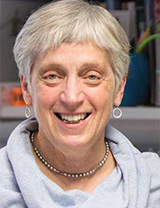
The Jackson Laboratory
Comparative Genetics and Genomics, Biomedical Ontologies, Knowledge Representation, Computational Biology
My research program focuses on functional and comparative genomics particularly in regards to approaches for integrating experimental data with existing knowledge to advance biomedical research. This research involves extensive development and application of semantic strategies for computational data integration including the development of ontologies, i.e., formal structures that describe the state of knowledge in a computable form that is consistent under rigorous logical validation. A major accomplishment of my research program is the design and development of the Gene Ontology (GO), one of the cornerstones of modern computational biology. I am one of the founders and Principal Investigators of the GO. As well, I am one of the Principal Investigators of the Mouse Genome Informatics Consortium, a comprehensive knowledgebase of genetic, genomic, and biological data that powers the translation of mouse experimental data to models for understanding human biology and disease.

UConn School of Medicine
Computational Biology, Systems Biology, Mathematical Modeling, Bioinformatics
Develop new methods, algorithms and software for computational modeling of biological systems, concentrating on detailed mechanistic models of signal transduction. We apply these tools to various systems, ranging from receptor signaling to RNA granules assembly. My lab is interested in using experimental datasets for modeling, as well as approaches for models and data storage and visualization.
UConn
Evolution, genomics, immunology
Species interactions are a major force driving evolution. I study the evolutionary effects of ecological interactions within and between species, including the genetic basis of adaptation and co-evolution, using threespine stickleback fish as a model system. Stickleback are often infected with a large cestode parasite. Some stickleback populations have evolved greater resistance to this parasite, in the form of reduced infection rates, or in the form of greatly reduced parasite growth and viability. Conversely, parasites have evolved to suppress immunity in their local hosts. We are working to understand the genetic and immunological basis of this co-evolution, set within its natural ecological context.
UConn
Anthropological Genetics, Biological Anthropology
Dr. Bolnick is currently working closely with Indigenous partners to assess the genetic and epigenetic impacts of settler colonialism in the southern United States and central Mexico. She is also interested in the ethical, legal, and social implications of genomic research, and she studies the methods and applications of genetic ancestry testing, investigating how ancestry tests influence and are influenced by contemporary understandings of race, ethnicity, gender, and identity. Through her work, Bolnick strives to help integrate more critical, intersectional, historically marginalized, and decolonial perspectives into science.

UConn
Cytogenetics, Chromosome Biology, Genome Instability, Clinical Genetics
Judy Brown, Associate Professor in the School of Nursing, and the Institute for the Systems Genomics is an ASCP certified clinical laboratory specialist in cytogenetics and molecular biology. Judy is the Director of the ISG Health Care Genetics Professional Science Master's Degree Program and actively pursues new training ideas and outreach opportunities for the benefit of all ISG graduate students. Dr. Brown's research is collaborative across the university with aims to develop new models for studying the interplay between chromosome instability and human disease. Judy also serves as a co-director for genomic integrity services within the Center for Genome Innovation specializing in the application and interpretation of cytogenetic and microarray assays.

UConn
Cytoskeleton, Autophagy, Membrane Trafficking, Genetics, Cell Biology, Aging, Inherited Disease, Infectious Disease, Host-Pathogen Interactions
Human cells rely on the cytoskeleton to properly organize shape, and move their membrane-bound organelles. Our work focuses on determining how actin and microtubules drive membrane remodeling, and how these cytoskeletal functions are altered during aging and disease. We use genetically-engineered cell lines, patient samples, bacterial pathogens, and biochemical approaches to address these questions.

The Jackson Laboratory
Computational Biology, Genetics, Genomics
The overall goal of our laboratory is to develop novel computational strategies that integrate biological data to understand complex genetic systems. These methods aim to map complex genetic architecture and infer models that involve multiple genetic and environmental factors. We derive network models of interacting genes, integrate disparate phenotypic and molecular data types, critically evaluate models with experimental tests, and seek to understand how biological information is encoded in genetic networks and genomic data.
University of Connecticut
Genetics and Genomics, Premature Infants, Neurodevelopment
Research summary: Premature infants (those born at <37 weeks' gestational age) often undergo numerous painful/stressful procedures as part of routine lifesaving care within the Neonatal Intensive Care Unit (NICU). Dr. Casavant's research encompasses studying epigenetic alterations (DNA methylation, gene expression and telomere erosion) that are the result of those procedures. Epigenetic alterations are then assessed for associations with negative neurodevelopmental sequelae often found in children born prematurely.
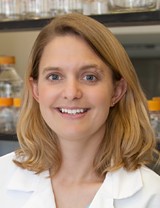
UConn School of Medicine
Human induced pluripotent stem cells, Neurodevelopment, CRISPR/Cas9, RNA-seq, 4C, Genomic imprinting, Angelman Syndrome, Non-coding RNAs
The Chamberlain lab uses human induced pluripotent stem cells to model and study two neurodevelopmental disorders, Angelman and Dup15q syndromes. The lab has two major foci: 1) to understand the mechanisms underlying regulation of UBE3A imprinted expression and 2) to develop therapeutic strategies for these neurodevelopmental disorders, including strategies for modulating gene expression in stem cell-derived neurons. We use genomic approaches, CRISPR/Cas9 genome editing, and antisense oligonucleotides in these studies.

UConn School of Medicine
Ethics and regulation of stem cell research and applications: I am evaluating the feasibility and ethical issues related to the development of human gametes from pluripotent stem cells and their use for reproductive purposes. First in human trials with stem cell based therapies: am currently assessing ethical and regulatory issues related to early human clinical trials with cell based therapies and I am evaluating the new International Society for Stem Cell Research guidelines for early clinical trials. Translational ethics and policy related to cell based applications: I am evaluating the policies and outcomes of the state stem cell research funding programs in New York, California, and Maryland. Reproductive issues related to genetic developments: I am continuing research related to the ethical and policy issues related to developments with non-invasive prenatal genetic testing.
The Jackson Laboratory
My laboratory integrates quantitative genetics, bioinformatics and behavioral science to understand and identify the biological basis for the relationships among behavioral traits. We develop and apply cross-species genomic data integration, advanced computing methods, and novel high-precision, high-diversity mouse populations to find genes associated with a constellation of behavioral disorders and other complex traits. This integrative strategy enables us to relate mouse behavior to specific aspects of human disorders, to test the validity of behavioral classification schemes, and to find genes and genetic variants that influence behavior.
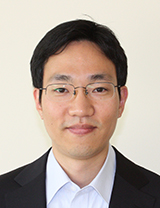
UConn
Protein Engineering, Antibody Engineering, Neurobiology
My research group engineers proteins to create tools for controlling and observing biological processes. Currently research topics include: engineering high affinity and specificity antibodies that target protein post-translational modifications, engineering intracellular antibodies for protein detection and modulation, and developing approaches to quantify and control protein turnover.
The Jackson Laboratory for Genomic Medicine
Cancer/Tumors, Genetic Tools, Computational Biology, Neurodegenerative and Neuromuscular Diseases, Bioinformatics, Developmental Disorders
Advances in sequencing have radically transformed the scale and nature of genetic studies. These have made it possible to analyze genomic changes across species, individuals, and single cells as mutations accrue and are subject to selection. Diverse phenotypic datasets have also grown rapidly, not only for sequencing-based assays such as gene expression and protein-nucleic acid interactions, but also other types including clinical and drug-screening investigations. Dr. Chuang's lab develops computational and mathematical approaches to understand how genomes function and evolve in order to make these findings clinically relevant. They use techniques from a variety of disciplines, including data science, evolutionary modeling, and biophysics. They are currently focused on two major areas: 1) Computational Approaches for Cancer Genomics, and 2) Gene Regulation. Their projects involve collaborations with experimental and computational colleagues at JAX Genomic Medicine, JAX Mammalian Genetics, and multiple outside groups.

UConn School of Medicine
Cancer Biology, Cardiovascular, Metabolism, Cancer Immunology
Metabolic-proliferative axis regulated by AMPK in human breast and bladder cancers. Contribution of hyperactive vascular signaling driving pathological vascular permeability through phospholipase C-bate isoforms. Patient-derived anti-cancer antibodies derived from reactive breast cancer sentinel lymph nodes.

UConn
Gut microbiome of preterm infants, genomics and early life stress/pain and neurobehavioral outcomes, genomics and neonatal abstinence syndrome, genomics and self-management of irritable bowel syndrome.
Dr. Cong investigates the regulation of early life stress by the brain-gut-microbiota axis and the prediction of neurodevelopment outcomes in preterm infants. Her longstanding interest is in the mechanisms of painful/stressful early life experiences associated with health outcomes in vulnerable high-risk infants.
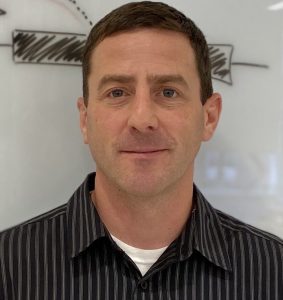
UConn
Functional Genomics, RNA Transcription, Nascent Transcription, Transcription Regulation, Non-coding RNAs
My lab is interested in how changes in RNA transcription and processing drive changes or maintenance of cellular states during cellular responses such as development or disease progression. Towards this goal, we primarily apply genomic techniques and bioinformatics to reveal the full transcriptional 'signatures' of various cell types as well as uncover the fundamental mechanisms of transcriptions that underly them.

UConn School of Medicine
Functional Genomics, Epigenetics, Developmental Biology, Disease Genetics, Chromatin, Evolution, Neurodevelopmental Disorders
The Cotney Lab is interested in determining how gene regulatory elements, namely enhancers, control gene expression during mammalian development. We aim to understand how new gene regulatory functions evolve, to identify mechanisms of enhancer function over large genomic distances, and globally identify variants of enhancer sequences that are associated with human disease.

The Jackson Laboratory
Aging, Cancer, Development Disorders, Reproductive Disorders, Genetics and Genomics, Immune Disorders, Resource Development and Dissemination
Dr. Courtois is the Interim Director of the Single Cell Biology Lab. She investigates tools for single Cell and Spatial-omics research and studies endometriosi etiology, pathology, and heterogeneity.

UConn School of Medicine
Human Clinical Genetics, Pharmacogenetics, Alcohol Use Disorders, iPSC as Model Systems, Epigenetics
Dr. Covault is a physician scientist and psychiatrist with experience directing clinical pharmacotherapy trials for alcoholism, human laboratory alcohol challenge studies, examination of genotype/phenotype associations including gene x environment interactions related to alcohol use disorders, pharmacogenetics, and use of human neural cells culture models. Current research projects include i) two separate pharmacologic clinical trials to reduce heavy drinking, one examining a modulator of neuroactive steroid biosynthesis, dutasteride, and the second an anticonvulsant, zonisamide; ii) in vitro studies using induced pluripotent stem cell (iPSC) technology to examine molecular biological effects of alcohol dependence associated genetic polymorphisms in GABRA2 and GRIK1 genes in human neural cell cultures, and iii) on going collaborations with Dr. Tennen examining gene x life stress interaction effects on heavy drinking among college students.

The Jackson Laboratory
Genetics, Mouse models, Neuromuscular disease, Neurodegeneration
Dr. Gregory Cox is seeking the molecular pathways that underlie degenerative neuromuscular diseases in humans, such as Duchenne muscular dystrophy (DMD), spinal muscular atrophy with respiratory distress (SMARD) and amyotrophic lateral sclerosis (ALS), also known as Lou Gehrig’s disease. There are currently no cures for these disorders and they are characterized by weakness and progressive wasting of muscles, eventually leading to paralysis and death. We have chosen to focus on the resources available at The Jackson Laboratory in the form of spontaneous and induced models of neuromuscular disease as our starting point for gene discovery and functional analysis. This approach ensures that the mutant genes we identify are critical for the normal development and/or maintenance of motor neurons and skeletal muscles.
Food safety and quality, microbiology, microbiome, microbial ecology, probiotics
The D’Amico Lab works extensively with small to very-small producers on product development, process control, environmental monitoring, and the development and implementation of food safety management systems. Our research group examines the microbial ecology of fermented foods and their production environemnts, the prevalence of pathogenic bacteria, and microbial behavior during the manufacture of various foods. Current projects seek to identify novel and natural interventions as preventive controls for pathogens in dairy foods.

UConn School of Medicine
microRNA, gene expression, mouse models, SNPs, Bone
My research program is focused on characterizing the mechanisms regulating gene expression in bone cells, with a focus on mRNA isoforms, microRNAs and regulatory networks. We are currently investigating the mechanisms by which the miR-29 family of miRNAs regulates the differentiation and function of bone-resorbing osteoclasts. In addition, we are studying how miR-433 regulates lineage commitment towards bone-forming osteoblasts and cartilage-forming chondrocytes. We use in vitro cell models as well as transgenic mouse models for our studies. This basic research will from a firm foundation for the design of novel therapeutic strategies for increasing bone mass and for enhancing fracture repair.
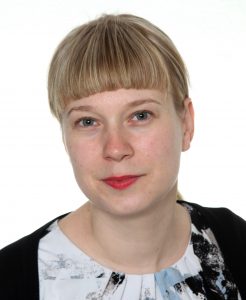
UConn
4D Genome Architecture, Functional Genomics, Epi/genetics, Gene Regulation, Developmental Biology, Evolution
Our lab is interested in multi-scale genome organization and gene regulation of multicellular organisms in evolution and disease. We study how diploid genome architecture is formed and inherited, and how dysfunctional genome dynamics influences cell fate. To this end, we use genomic and single-cell transformative imaging approaches, including single-molecule localization microscopy.
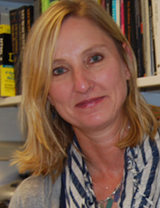
UConn
Developmental Neuroscience, Cognitive Neuroscience, Developmental Disabilities
Dr. Fitch's lab studies developmental influences including genetic variants and mutations, hormones, and injury that may influence behavioral and cognitive outcomes in rodent models. Our genetic work focuses on mouse models with KO, KI or conditional KO of genes implicated in cognition and cognitive disorders (e.g., Dyx1c1, Dcdc2, Kiaa0319, Cntnap2 and others). Our rat work focuses on modeling early injuries typical of term or term both brain injuries. We work to associate these factors with specific behavioral outcomes, as well as underlying neural circuitry subserving the observed variation.

UConn
Animal breeding and genetics, genomic selection, genetic evaluation, quantitative and population genetics, genotype by environment interaction
Dr. Fragomeni's research focuses on using genomic information in predicting animals' performance. Additionally, he utilizes genomic tools to study the structure of livestock populations and dissect the underlying genetics of complex and economically important traits in diverse animals' populations, such as dairy and beef cattle, pigs, and dogs. He is particularly interested in genotype by environment interaction and how it affects our ability to predict phenotypes. Finally, Dr. Fragomeni is interested in improving genomic selection models and tools to increase accuracy of prediction, especially for young animals.

UConn
Data Mining, Actuarial Science
At a broad level, my research interests lie in data mining and actuarial science. In the area of data mining, I am especially interested in developing efficient algorithms for data clustering, which is the most basic form of unsupervised learning that aims to divide a collection of data items into groups or clusters, such that items within a cluster are more similar to each other than they are to items in other clusters. I am also interested in applying data clustering and other data mining techniques to solve problems in other areas such as bioinformatics, actuarial science, computational finance, and social network analysis. In the area of actuarial science, I am especially interested in developing efficient algorithms and models to solve the problems related to variable annuity.
UConn School of Medicine
CRISPR biology, Microbial Genetics, Computational Biology
CRISPR-Cas is an adaptive immune system found in a wide range of prokaryotes, from commensal bacteria to extremophilic archaea. The development of CRISPR-Cas into a genome editing tool has revolutionized biology and it serves to highlight how efficient and sequence-specific this system is. In the native hosts, that efficiency and sequence specificity allow bacteria and archaea to quickly recognize and degrade DNA of invaders like phages. But before a prokaryote can mount a targeted defense, it must first have a memory of that invader. For my research, I use high throughput sequencing and analysis to learn how the DNA for new immunological memories is selected, processed, and incorporated into the CRISPR array.

UConn
Bacterial Mechanisms of Pathogenesis, Comparative and Functional Genomics, Vaccines, Biological Signatures, Bioweapons
Dr. Geary's research is focused on:
- Comparative genomic and transcriptomic analyses of pathogenic mycoplasmas.
- Investigations into: mycoplasma cytadherence molecules, host cell receptors, and variably expressed surface lipoproteins.
- Vaccine development and immunologic and genetic means of detection (DIVA tests) of these pathogens.
- Investigations into host cell signatures associated with, Vaccinia virus (as a model for Variola, smallpox), and how they may be useful for attribution purposes in the event of a release of smallpox as a bioweapon.
The Jackson Laboratory for Genomic Medicine
Genomics, Machine Learning, Statistical Methods, Data Science
My interests are in applying machine learning and statistical modeling approaches to learn biologically and clinically meaningful information from large scale genomics data. Most of my work is in cancer genomics with an aim to develop predictors of therapeutic response or prognosis.
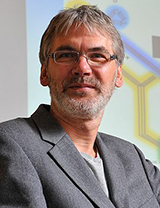
UConn
Molecular Evolution, Microbiology, Computational Biology, Comparative Genomics, Horizontal Gene Transfer, Selfish Genetic Elements, Microbial Populations, Metagenome Analysis
Gogarten is best known for rooting of the tree of life, and for his recognition of horizontal gene transfer as an important force in microbial evolution. His current research is on comparative genomics, the interconnection between gene and organismal level selection, and the emergence of a division of labor in microbial populations. An ongoing project studies the life-cycle of inteins, a type of molecular parasite that similar to introns invades host genes, but removal of the inserted sequence through self-splicing only occurs at the protein level following translation. Inteins provide an illustration for the types of symbiotic relations between genes occurring within a genome, and their distribution provides a measure for gene transfer occurring in nature.
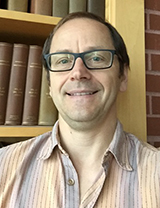
UConn
Microbiome, Symbiosis, Pathogenesis, Genomics, 16S rRNA, Antibiotics, Microbiology, Genetics
Dr. Graf's research team studies the role of the microbiome in the health of animals, virulence and colonization factors of Aeromonas, the evolution of microbe-host associations and the spread of antibiotic resistance. We use a range of techniques including genetics, microscopy, 16S rRNA gene surveys, metagenomics, transcriptomics and comparative genomics to address these topics.
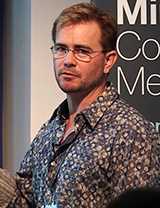
UConn School of Medicine
Genomics, RNA, Alternative Splicing, ENCODE, CRISPR
My laboratory uses genomic approaches to study all aspects of RNA biology. My lab has played a key role in the modENCODE and ENCODE projects to functionally annotate the Drosophila and human genomes, with an emphasis on characterizing the transcribed RNAs, how they are processed, and the proteins that bind to them. We also study several unusual aspects of RNA processing in Drosophila including trans-splicing, recursive splicing, and alternative splicing of the Dscam1 gene, which can encode over 38,000 different isoforms. Finally, we have been collaborating with the laboratory of Michael Terns to study the biogenesis and function of CRISPR RNAs and how adaptation via the CRISPR system occurs when an organism encounters foreign DNA. We study these processes using a variety of genomic and computational approaches including cutting edge sequencing methods such as nanopore and single-cell RNA sequencing.
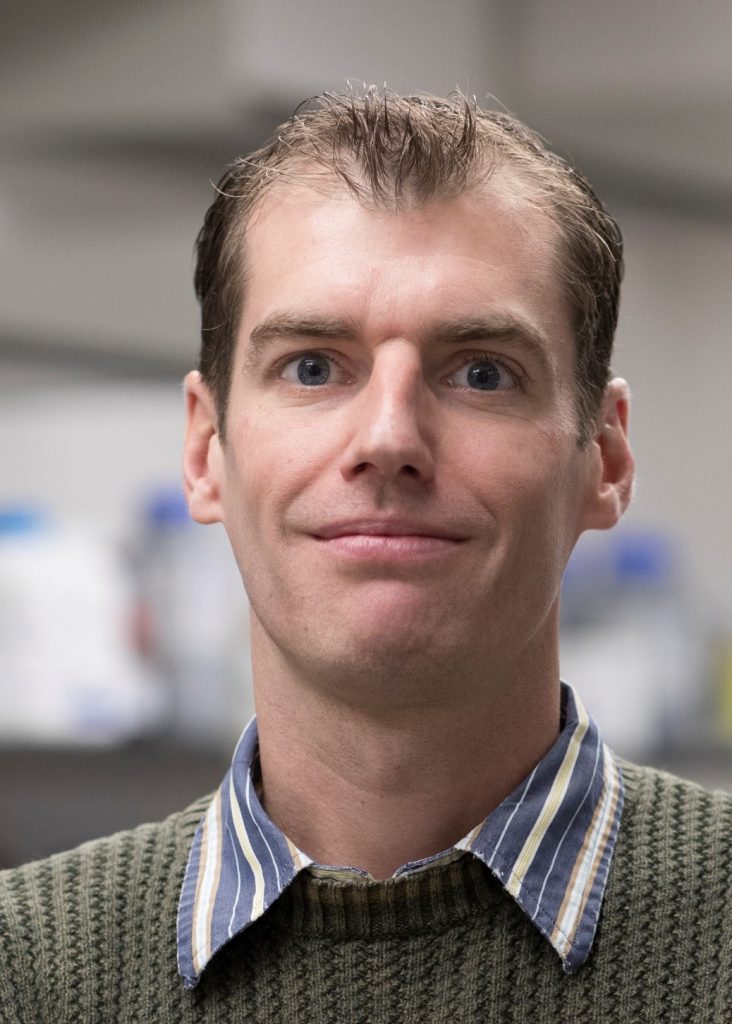
UConn School of Medicine
Molecular Genomics, Systems Biology, Transcription Regulation, Chromatin, Hormone Signaling, Epigenomics, Cancer Biology
Our laboratory uses molecular biology, systems biology, and genomics to study transcription regulation. Precise regulation of transcription is central to cellular homeostasis and an organism’s response to developmental, nutritional, and environmental signals. Transcription factors bind to DNA to directly regulate gene expression and control cell fate. A goal of the group is to identify and characterize transcription factors that maintain homeostasis, promote differentiation, and are dysregulated in disease states.
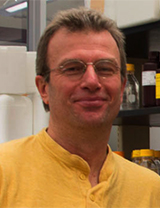
UConn School of Medicine
Transcription, RNA splicing, Kinases (CDKs)/phosphatases/cell signaling, Molecular Parasitology, Microbiology, ChIP-seq
We work on deviant gene expression mechanisms in the lethal protistan parasite Trypanosoma brucei which is also a model organism for related parasites such as Trypanosoma cruzi and Leishmania spp. Hallmarks of the trypanosome gene expression system are polycistronic transcription of large tandem gene arrays, a unique multifunctional RNA polymerase I that facilitates antigenic variation of the parasite, and processing of all nuclear pre-mRNA by spliced leader trans splicing. A current focus in the laboratory is the cyclin-dependent kinase CRK9 which forms an unusual tripartite enzyme complex, is essential for trans splicing and trypanosome viability, and appears to coordinate transcription and RNA splicing.
UConn School of Dental Medicine
Stroma, Cancer-stroma interaction, Metabolism, Evolution, Cardiac Differentiation, Hypoxia
Our lab’s objective is to understand a cell’s interaction with its neighbors and the microenvironment. With a particular focus on tumor microenvironment, we aim to unravel the language cells employ to converse with each other, how the grammar and the content of the langage adapt to the environment, and how cells behave in response. We use a gamut of of techniques, including live microscopy, bioinformatics, tissue engineering, nanofabrication, cell patterning, evolutionary biology, and genetics to answer fundamental questions in biology and medicine.
UConn
Maria is a licensed, certified genetic counselor and an active member of the National Society of Genetic Counselors (NSGC). She has practiced as a clinical genetic counselor in both New England and Virginia. Maria has combined genetic counseling with research on many occasions and served on an NIH-funded study aimed at increasing family communication about cancer. Additionally, she has managed multiple large federally-funded research grants focused on interventions for young children at risk for emotional and behavioral disorders.
UConn School of Medicine
Cancer, cardiovascular disease, stroke, multiple sclerosis, proteomics, genomics, single cell sequencing, systems biology
David Han’s laboratory utilizes systems biology, proteomics, and genomic approaches to uncover underlying mechanisms of human diseases. Currently, the lab is focusing on anti-cancer immunity, focusing on identification and characterization of cancer antigens, anti-cancer antibodies, and cancer vaccines. Another project in the laboratory targets apoptotic cell engulfment process as a one of the key contributors of inflammatory diseases, including cardiovascular disease and stroke. We are also interested in identifying the underlying causes of autoimmune disorders such as multiple sclerosis. Currently, we utilize whole genome sequencing, proteomic profiling, and network analyses to uncover disease initiating mechanisms.

UConn School of Medicine
Structural Biology
The research of my group focuses on understanding the physical and chemical principles that govern the structure/function relationships in biomedical important proteins, including the ubiquitin ligases that mediate the ubiquitination and subsequent degradation of key cell-cycle regulatory proteins. Our primary tools are atomic-resolution protein structure determination and complementary biophysical and biochemical studies. Our long-term objective is to use SCF ubiquitin ligases as a model system to elucidate the structural and mechanistic basis of substrate recognition, lysine specificity and ubiquitin transfer, and to use this knowledge to understand how defects of the ubiquitin system can lead to cancer and other human diseases.

UConn School of Medicine
Aging, Infectious Disease, Immune Responses
My laboratory investigates how aging impacts the response to influenza infection. We focus on systems approaches including examination of the immune response, the skeletal muscle response, the lung response, the metabolic response and the microbiome response in our murine models. We also examine how aging impacts the protective capacity of influenza vaccines in both murine and human models.

UConn School of Medicine
Cancer, Stem Cells, Organoids, Aging, Hereditary Disease
The Heinen laboratory studies the function of the DNA mismatch repair pathway and how defects in this pathway lead to colorectal cancer development. We use a variety of approaches to understand this pathway including human intestinal organoids derived from both adult intestinal tissue as well as human embryonic stem cells. In particular, we are interested in understanding the role of the mismatch repair pathway in the cellular response to DNA damage and whether this function plays a role in protecting intestinal stem cells from becoming tumorigenic.

UConn
Pediatrics, Gastroenterology, Hepatology, Genomics, Innovation, Nutrition
Dr. Henderson’s science focuses on Brain-Gut-Liver Microbiota Axis and chronic effects of stress on intestinal health across the lifespan. Dr. Henderson’s work is a nationally and internationally recognized and she is an inventor on multiple patents and licensed technologies.
UConn School of Medicine and The Jackson Laboratory for Genomic Medicine
Cardiovascular, CRISPR Cas9 System, Genetics and Genomics
Dr. Hinson’s research utilizes genomic approaches like CRISPR/CAS to interrogate mechanisms of inherited cardiovascular disorders especially those that lead to heart failure. He is particularly interested in developing single cell and cardiac microtissue assays derived from disease-specific, human induced pluripotent stem cells (iPScs) in combination with in vivo mouse models.
UConn
Evolution, Microbiome, Host-microbe Interactions, Ecology, Microbial Ecology, Ornithology, Bioinformatics
The Hird Lab studies the evolution and ecology of host-associated microbiomes, with particular emphasis on avian hosts. The big question we’re trying to answer is what role the microbiome has played in avian diversification and ecology. We use marker genes and meta-omic approaches to infer patterns in microbiome community composition and function and we combine those results with evolutionary and ecological models to understand the processes that generated the patterns. The research group is also interested in environmental (biotic and abiotic) influences on the microbiome and the cascading effects microbes can play on host biology.

UConn
Meiosis, meiotic drive, chromosome biology, Drosophila, genetics, cytogenetics, B chromosomes, centromeres, chromosome instability, oogenesis, genetic conflict.
The Hanlon Lab studies how chromosomes move, form, and evolve. Our model of choice are the B chromosomes that were recently found in the fruit fly, Drosophila melanogaster. These B chromosomes exhibit abnormal behavior during female meiosis and are able to be transmitted to progeny in a biased manner, which is detrimental to the fly because the presence of B chromosomes will induce high levels of chromosome missegregation during meiosis. The Hanlon Lab aims to delve further into the biology of the B chromosome using cutting edge genomic approaches to understand how this biased transmission is operating, the mechanism behind how B chromosomes are disrupting the normal segregation of the essential chromosomes, and the events that led to chromosome instability and the creation of the B chromosome.

UConn School of Medicine
Osteoporosis, Osteoarthritis,Genetic Disorders of Phosphate Wasting, Sickle Cell Bone Disease, Microbiome and Bone, Epigenetics
Marja M. Hurley, M.D., is a Professor of Medicine and Orthopedics at UConn Health School of Medicine, and a member of the Institute for Systems Genomics. Her research studies the molecular mechanism(s) by which Fibroblast growth factor 2 (FGF2) isoforms differentially modulates bone and phosphate homeostasis. Dr. Hurley's research also involves delineating the epigenetic mechanism by which the nuclear localized high molecular weight isoforms of FGF2 mediate growth-plate abnormalities and osteoarthropathy. A second area of current research involves elucidating the role of the microbiome in sickle cell bone disease.
UConn
Cellular Neurophysiology, Electrophysiology, Neuroanatomy, Hypothalamic Neural Circuits, Optogenetics, Single Cell Biology
Research in the Jackson Lab is focused on the cellular and synaptic neurophysiology of neural circuits in the mammalian hypothalamus that regulate fundamental behavioral states such as sleep, hunger and stress. Our team is focused on deciphering the neurochemical identity, cellular properties and synaptic connectivity of functional subpopulations of hypothalamic neurons, which is an important prerequisite to a circuit-level understanding their role in health and disease. To accomplish this, we use patch-clamp electrophysiology in brain slices in concert with a toolbox of neuroanatomical methods, optogenetic approaches as well as single cell gene expression profiling.
UConn School of Dental Medicine
Regenerative Biology of Bone
My major research focus has been on identifying and isolating cells within the skeletal progenitor pathway. I have characterized transgenic animals that define cells at different stages of osteoblast lineage differentiation. We have developed a lineage tracing model using alpha-smooth muscle actin inducible Cre that identifies an osteoprogenitor population in vivo in bone marrow, periosteum and periodontal tissue, and demonstrate their contribution to injury healing. We have expanded our research towards understanding the molecular mechanisms that regulate healing of bone, including regulation of Notch signaling, and role of the growth factors in healing process.

UConn
Neurodevelopment, Neurodegeneration, Genetics, RNA processing, Minor spliceosome, Alternative splicing
We are interested in understanding how RNA processing, including minor splicing and alternative splicing, regulates gene expression in mammalian development and disease. We employ mouse genetics to perturb the splicing process in the developing cortex to model microcephaly observed in diseases such as microcephalic osteodysplastic primordial dwarfism type 1. We have recently begun to explore the role of minor spliceosome in the pathogenesis of amyotrophic lateral sclerosis (ALS).

UConn School of Medicine
Cilia, Dyneins, Cytoskeleton, Molecular Motors, Microtubules, Genetics, Biochemistry, Structural Biology, Cell Biology
Cilia are essential for development and organismal homeostasis. Indeed, in humans more than 5% of all genes (>700 different proteins) are involved in the assembly and/or function of these organelles. Defects in these structures lead to a broad array of phenotypes (including infertility, obesity, neurological disorders, polycystic kidneys, retinal degeneration, skeletal abnormalities etc) that are collectively known as ciliopathies. We study cilia assembly and motility using the green alga Chlamydomonas and the planarian Schmidtea as genetically tractable model systems. We have been especially interested in understanding the structure, function and regulation of the highly complex dynein microtubule motors that are needed for both the motility of these structures and that also participate in their assembly.
University of Connecticut
Microbial Genomics, Microbial Evolution, Symbiosis, Microbiome, Secondary Metabolites
Microbes live in diverse communities where they interact with each other and with symbiotic hosts. These interactions are frequently mediated by secreted secondary metabolites, although the diversity and natural function of these interactions remains obscure. The Klassen lab combines genomic and metabolomic tools to understand the ecology and evolution of these interactions, focusing especially on the fungus-growing ant Trachymyrmex septentrionalis as a model system where such interactions can be concretely defined and experimentally manipulated. We also develop novel computational approaches to assess the genomic diversity of secondary metabolite biosynthetic genes and collaboratively leverage these tools for genome-driven drug discovery. Research in the Klassen lab therefore both seeks to discover novel and biotechnologically-interesting metabolites and fundamental insights into the nature and mechanisms of host-microbe symbioses.

UConn
Disease Ecology, Host-Microbe Interactions, Urban Ecology, Conservation Biology, Ornithology, Evolution, Ecoimmunology
The overarching theme of my lab's research is to understand how animals defend themselves against parasites, particularly in response to environmental change. For example, in the Galapagos Islands, we use experimental field studies to determine the effect of an introduced parasitic nest fly Philornis downsi on endemic birds and how these birds defend themselves against P. downsi. We are also interested in how urban living influences the eco-evolution of bird-parasite relationships.
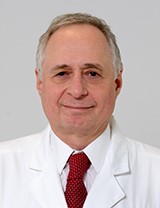
UConn School of Medicine
GWAS, Gene Expression, RNA splicing, Epigenetics, Personalized Medicine
Dr. Kuchel is a geriatrician and gerontologist with decades of translational research experience focused on efforts to improve health and function in older adults with an emphasis on key determinants of independence in late life - mobility, cognition, voiding and host defense. Recent technological advances now allow for genome-wide studies of gene expression and epigenomics using very limited sample. Leveraging these important developments and in collaboration with investigators at UConn Health, UConn, Jackson Laboratory for Genomic Medicine and Jackson Laboratory in Bar Harbor, these efforts are beginning to offer new and much more individualized perspectives into health, frailty and resilience with aging, offering novel opportunities for the design and testing of innovative and more precise interventions.

UConn
Immunology, Stem Cells, Cancer, Autoimmune Diseasee
The research projects in Dr. Lai’s laboratory include 1) using bioinformatics to identify new immune checkpoint molecules and then employing gene engineering to produce the recombinant proteins and antibodies to treat cancer and autoimmune disease, 2) employing embryonic stem cell (ESC)- and induced pluripotent stem cells (iPSC)-derived cells to model and treat immunodeficiency and autoimmune disease, and 3) using a gene engineering approach to produce recombinant proteins to treat T cell immunodeficiency in older adults.

UConn School of Medicine
Statistical Genetics, Bioinformatics, Biostatistics, Epidemiology, and Survey Statistics
I collaborate and provide consulting service and conduct methodology projects based on real statistical questions. In statistical genetics, I develop statistical methods for gene mapping and analyze a variety of genetic data.

UConn
The Lalande laboratory studies Prader-Willi syndrome (PWS), a disorder caused by the absence of a normal paternal contribution to chromosome 15q11-q13, most commonly due to large deletion (LD) of the ~5,000kb imprinted region or to maternal uniparental disomy (mUPD). PWS is characterized by neonatal hypotonia and, subsequently, by hyperphagia and consequent obesity as well behavioral problems. A long non-coding RNA (PWS lncRNA) initiates upstream of the PWS-Imprinting Center (PWS-IC), a region of differential CpG methylation that is the germline 15q11-q13 imprinting mark, and extends >600kb distally. The PWS lncRNA also serves as host to several box C/D class small nucleolar RNAs (snoRNAs), including the SNORD116 and SNORD115 clusters. We have established induced pluripotent stem cell (iPSC) lines from PWS 15q11-q13 LD and mUPD cases and optimized protocols for neuronal differentiation. Our PWS stem cell models have led us to discover a chromatin repressive complex that is tethered to the silent maternal SNORD116 cluster by zinc finger protein 274 (ZNF274). We have used CRISPRs to generate ZNF274 knock out (ZNF274KO) derivatives of the PWS LD and mUPD iPSC lines. Upon neuronal differentiation of the ZNF274KO PWS iPSCs maternal PWS lncRNA transcript levels, including SNORD116 cluster, increase dramatically and attain those of the normal paternal PWS lncRNA transcripts. Our findings that ZNF274KO efficiently rescues the maternal copy of the PWS lncRNA in neurons presents a potential opportunity for therapeutic intervention in PWS. Our current focus is on developing novel epigenetic editing strategies to block ZNF274 binding and activate the maternal PWS lncRNA.
UConn
Infectious Diseases, Veterinary Microbiology, Virology, Molecular Epidemiology, Bioinformatics, Vaccines
Dr. Lee’s current research projects include:
- Optimization and validation of next-generation sequencing methods for metagenomic detection and complete genome sequencing of viruses.
- Development of bioinformatics pipeline for the analysis of viral genomic data.
- Phylogenetic analysis to understand the emergence, evolution, and spread of animal pathogens.

The Jackson Laboratory for Genomic Medicine
Genetics and Genomics, Computational Biology, Aging, Behavioral Disorders, Cancer, Developmental Disorders, Reproductive Disorders, Neurodegenerative and Neuromuscular Disorders
The research laboratory of Dr. Charles Lee at The Jackson Laboratory for Genomic Medicine uses state-of-the-art technologies to study structural genomic variation in human biology, evolution and disease.

UConn
Stress physiology, Dehydration, Osmotic stress, Infection/inflammation, Exertional Heat illness, Exercise, Diet, Biomarkers, Transcriptomics
Our lab studies stress resistance and aging-related adaptations to stress in C. elegans and humans. We use a variety of cellular, molecular, and genomic approaches to study how organisms adapt and become more resilient to dehydration, heat, and oxidative stress and exercise training and diet-related stress.

UConn
Nutrigenomics, Epigenetics, Metabolic diseases
My research focuses on the identification of molecular mediators that are involved in lipid metabolism and inflammatory signaling pathways, and on the elucidation of molecular mechanisms by which dietary factors play regulatory roles in the integration of lipid metabolism and inflammation. In particular, how dietary factors regulate histone deacetylases as an epigenetic mode of action for the regulation of gene transcription in metabolic, inflammatory, and fibrogenic pathways are primary research interests.
UConn School of Medicine and The Jackson Laboratory for Genomic Medicine
Genetics and Genomics
Dr. Lee’s primary interest is to understand the role of signaling molecules in regulating embryonic development and adult tissue homeostasis. He has focused on the superfamily of secreted proteins that are structurally related to transforming growth factor-Β (TGF-Β). Members of this growth factor family have been shown to play important roles in regulating the development and function of many different tissues, and as a result, many of these factors have shown enormous therapeutic potential for a wide range of clinical applications. Using molecular genetic approaches, he and his lab have identified a large number of novel mammalian TGF-Β family members that we have designated growth/differentiation factors (GDFs). They have been using a variety of experimental approaches, including genetic manipulation of mice, to attempt to understand the precise biological functions of these molecules. We are particularly interested in understanding the roles of these molecules in regulating tissue growth.

UConn School of Medicine
Genetics and Genomics, Developmental Biology, Neuroscience
My research goal is to elucidate how neural stem cells self-renew and generate different neurons and glial cells in the mammalian central nervous system. These questions are fundamentally important to understand brain development and neurological disorders, such as epilepsy, autism, schizophrenia. We combine several molecular and cellular approached, including mouse genetics, high-throughput technology, developmental neuroanatomy, and embryonic stem cells in our studies.

UConn School of Medicine
Cardiovascular Diseases, Biobank, Functional Genomics
Our group is interested in identifying novel genetic and epigenetic variants for vascular and cardiac diseases. As these diseases overlap with those in neurobiology and aging, we have established a UConn Biobank of de-identified records for phenotyping and that of DNA and RNA for genotyping. Sequencing and informatics should shed light on the disease implications of variants and their influences on expression.

UConn
Photosynthesis and Proton-Pump Rhodopsin, Nutrient Physiology, Sexual Reproduction and Cell Proliferation, Symbiosis
My laboratory uses ‘omics’ approach to address marine ecological questions, which boil down to “who they are” and “what they are doing”. By characterizing algal genomes and (meta) transcriptomes as well as metabarcoding (biodiversity) of marine eukaryotic microbes (protists), we try to decipher the molecular machinery underpinning energy harvesting, nutrient uptake, and reproduction that make these protists successful in the ocean and adaptive to the highly heterogenous and dynamic environment. I have heavily focused on dinoflagellates, a group of Alveolata that are close relatives of malaria parasites Plasmodium, which are major contributors of harmful algal blooms and marine biotoxins on the one hand and are essential for the beautiful coral reefs through the coral-Symbiodinium symbiosis on the other.
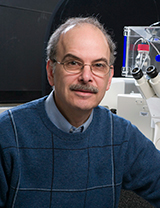
UConn School of Medicine
Systems Biology, Computational Modeling, Dendritic Spines, Fluorescence Microscope Imaging, Fluroescent Probes
Dr. Loew's research focuses on the chemical and physical mechanisms underlying cell biological processes. He develops new quantitative microscope imaging and new computational modeling approaches to address this general area. He has been interested in synaptic signaling and plasticity, particularly in relation to the synaptic basis for some forms of autism, and has combined experimental and modeling approaches to explore this area. He also leads the Virtual Cell Project, a general computational system for modeling and simulating complex biological processes.

UConn
Neurodevelopment, Somatic Mutations, CRISPR/Cas9, Epilepsy, Cellular Neurophysiology
The lab is engaged in multidisciplinary research seeking to discover mechanisms of cell diversity during the generation of developmental malformations and brain tumors, pathophysiology of somatic mutations in neurons and glia, and mechanisms of epileptogenesis following focal lesions in cerebral cortical development. We develop and use a variety of methodologies including somatic cell genetic engineering by CRISPR/Cas9 in developing brain in vivo, electrophysiology, and live imaging.

UConn
Stress, Immunogenetics, Immunotoxicology, Metallothionein, Surface Plasmon Resonance, Inflammation, Autoimmunity
Dr. Lynes' research group is engaged in research to define the molecular mechanisms that mediate stress-induced immunomodulation. Their principle focus is on the role played by the stress response protein, metallothionein. In the course of this work, they have recently discovered that an anti-MT monoclonal antibody has therapeutic benefit in inflammatory bowel diseases. Additionally, the research group is engaged in work to develop enabling technologies based on grating coupled surface plasmon resonance microarrays.

UConn
Dr. Maas is the Facility Director of the Microbial Analysis, Resources and Services (MARS) facility, supporting the UConn research community specializing in the analysis of microbial samples and high-throughput processing of nucleic acids. Examples include the characterization of microbiomes (Bacterial V4, Bacterial EMP, Fungal ITS, or custom amplicon), sequencing of small genomes, 96-well and 384-well PCR setup or DNA quantification and other automated liquid handling applications. Services are available a la carte, ranging from fee-for-service to unassisted use of the equipment by trained and certified users.
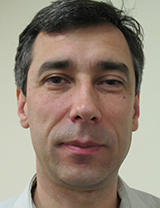
UConn
Bioinformatics, Computational Genomics, Computational Molecular Epidemiology, Immunoinformatics, Metagenomics, Next-Generation Sequencing Data Analysis
I conduct research in applied algorithms, with a particular focus on the design, analysis, and implementation of heuristics and approximation algorithms for NP-hard optimization problems that arise in bioinformatics and computational genomics. Current research is on scalable algorithms for high-throughput sequencing data analysis.
Skeletal Stem Cells, Osteoblast Development, Axial Skeletal Development, Regulation of Differentiation
Research in my lab has a great interest in understanding signaling mechanisms that influence the fate of skeletal progenitors during the development, maintenance, and regeneration of bone tissues. Ongoing work includes the use of mouse and human embryonic stem cells and induced pluripotent stem (iPS) cells and learning how to direct their differentiation into cells of the axial skeleton. We also investigate adult bone marrow mesenchymal stem cells (MSCs) and the signaling pathways that influence their fate and function.
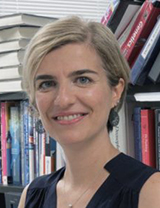
UConn
Epigenetics, Chromatin, Chromosome Biology, Genetics, Molecular Biology, Cell Division
My lab studies how genomes are partitioned and inherited accurately during cell division. We are particularly focused on the centromere, an essential genomic locus present in all eukaryotes that is epigenetically defined. We use a variety of approaches to elucidate the mechanisms of centromere specification, centromere evolution, and the link between centromere dysfunction and genome instability.
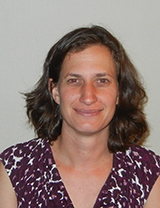
UConn
Neuroscience, Functional Genomics
Karen Menuz focuses on the molecular mechanisms underlying odor responses in the Drosophila olfactory system. An ultimate goal of her research is to identify targets for developing new insect control agents active against insect vectors of disease, many of which detect their human hosts through olfactory cues. In particular, she is examining how the cellular environment surrounding individual olfactory neurons contributes to odor encoding and behavior. Towards this goal, she has begun to explore the impact of transporters and putative Odorant Degrading Enzymes on odor signaling using a combination of genetic, electrophysiology, microscopy, and behavioral techniques.

UConn School of Medicine
RNA Processing, 3’UTRs, circRNAs, Drosophila, Neuronal gene regulation, Transcriptomics
Our laboratory is interested in the transcriptome of neurons. We use RNA sequencing approaches to understand the exonic content and regulation of full-length transcripts. A particular focus of our group is understanding cross-regulation between Alternative Splicing and alternative cleavage and polyadenylation (APA). Using genome editing approaches we interrogate the molecular and physiological roles of alternative transcript isoforms using Drosophila melanogaster and mammalian neural differentiation cell culture models.

UConn School of Medicine
Chemical Biology, Pharmacology, Live Imaging, Retina, Cornea, Scarring, Fibrosis, Gliosis, Citrullination, Single Cell Transcriptomics, Drug Discovery
The Mohan lab interfaces chemical, biological and genetic approaches to illuminate novel protein targets that contribute to irreversible blindness. Studying the visual system, we are interested in how corneal Schwann cells are involved in corneal nerve injury and disease. We are employing a range of transgenic mouse models, genetic lineage studies and single cell transcriptomics to define the cellular differentiation steps implicated in nerve repair. Using similar approaches to study retinal scarring in the human disease age-related macular degeneration, our lab has discovered a novel druggable target expressed during retinal gliosis that causes the posttranslational modification known as citrullination. We ultimately hope to translate our findings towards advancing small molecule drugs for the clinic.

UConn School of Medicine
Computational Biology, Signal Transduction, Systems Biology, Cancer, Software Development
I am a cell biologist working on experimental analysis and computational modeling of signal transduction and cell regulatory networks. Examples are the formation and regulation of multi-molecular assemblies and the identification pathway elements responsible for specific phenotype differences between cell populations. I am also developing new computational tools and techniques bridging bioinformatics with dynamic models and simulation, recently focusing on methods to predict combinatorial drug interventions, and I direct the UConn Health High Performance Computing facility.
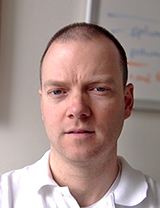
UConn School of Medicine
Endothelial Cells, Extracellular Matrix, Alternative Splicing, Cardiovascular, Immunology
Our goal is to help unravel the complex interplay between recruited immune cells and the endothelial lining of the vasculature in chronic inflammation, with a focus on alternative splicing and changes in the sub-endothelial matrix as critical determinants of that interaction. Chronic inflammation contributes to a wide variety of dangerous cardiovascular lesions, including the erosion and rupture of atherosclerotic plaques and aneurysms. Our work has revealed alternative splicing to be a key regulatory node in this process, and as many of the immune-regulated alternative splicing events we have identified are in extracellular matrix molecules, we are particularly interested in the functional consequences of these splicing events. We use large scale and informatics intense approaches to in vitro screens and tissue-specific and temporally-regulated mouse models. Together, these approaches are helping to tease out key signaling nodes in the endothelium in the regulation of chronic vascular inflammation. We are interested in what tips the balance away from resolution and towards sustained vascular injury.

UConn
Computational Genomics, Translational Bioinformatics, Genomic Variation Detection, Integrative Analysis, Statistical Machine Learning, Biomedical Image/Signal Processing
Sheida Nabavi's research is on development of novel computational methods, based on statistical machine learning and signal/image processing techniques, to detect and integrate genomic, transcriptomic, and epigenetic features especially in cancer studies.
UConn School of Medicine
Cancer Biology, Colorectal Cancer, Inflammation-associated Cancer
Our laboratory focuses on chemoprevention of Colorectal Cancer (CRC) and inflammatory bowel diseases (IBDs). I am particularly interested in the role of bioactive lipid signaling in colon carcinogenesis. Using several mouse genetic models that we have created at our institution, we have provided new insights into mechanisms by which PGE2 signaling promotes tumor growth and mucosal inflammation. I also oversee studies that focus on therapeutic interventions and nutritional modulation of cancer risk.
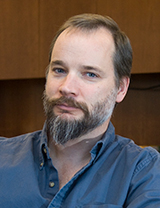
UConn
Genomics, Systems Biology, Developmental Biology, Embryology, Stem Cells, Gene Regulatory Networks
We utilize a collection of single cell analysis to build high-resolution maps of complex developmental processes including stem cell reprogramming and embryonic development. The goal of this work is to discover new cell types, and the gene regulatory networks governing cell fate decisions.
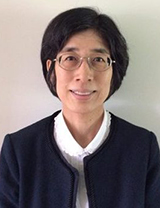
UConn
Neuroscience, Brain Development, Glial Biology, Stem Cell Biology, Neuron-Glial Interaction, Epigenetic and Transcriptional Regulation of Glial Cell Lineage
My research focuses on the lineage and function of glial progenitor cells in the mammalian central nervous system known as NG2 cells or oligodendrocyte precursor cells. We are applying systems genomics approaches combined with mouse genetic and cell-based experiments to understand how the fate and proliferation of NG2 cells are regulated under physiological and pathological conditions. We are studying the consequences of manipulating these cells to explore their function in the neural network.
UConn
Genetics, Epigenetics, Genomics, Developmental Biology, Autism, Mouse
Gene by environment effects can be transmitted across generations and are termed: Transgenerational Epigenetic Effects (TEE). The molecular mechanism by which TEE are transmitted from generation to generation are poorly understood, but are thought to involve epigenetic factors in the germline (eggs/sperm). Our lab focuses on the Xlr genes in mice, a family of X-linked imprinted genes involved in fertility and neurodevelopment. Imprinted Xlr genes are expressed only from the maternal X chromosome and disruption of normal expression leads to defects in spermatogenesis and in behavior of mice across three generations. We are investigating the role of Xlrgenes as mediators of epigenetic signalling passed from generation to generation.
UConn
Centromere, Repetitive DNA, Cytogenetics, RNA-Protein Interactions, Genetic Conflict, Genome Assembly, Functional and Population Genomics
Repetitive DNA elements comprise over 50% of the typical eukaryotic genome. Decades of research suggest that repetitive elements profoundly impact genome stability during dynamic processes such as cell division, viral invasion, tumorigenesis, and development. My research program employs molecular genetics, genomics and computational approaches to study the mechanisms that maintain, and disrupt, genome stability with a particular focus on repetitive elements. Projects include the study of: retroelement transcription and centromere function; novel small RNA biogenesis pathways; and global chromosome and genome changes accompanying destabilizing events (such as carcinogenesis, hybrid dysgenesis and environmental stress). In addition, we are expanding the scope of diverse next generation sequencing (NGS) technologies by using novel library preparation and computational methodologies for drafting and characterizing whole genome sequences. These innovative approaches to NGS promise to expand the number and diversity of eukaryotic species used as models for studying genome biology. Recently, we have applied these techniques to both established models and non-model species to understand the dynamic response of genomes to global warming.

The Jackson Laboratory for Genomic Medicine
Microbiome, Genomics, Infectious Disease, Cancer
The unifying theme of the lab is to understand how our body’s microbiota interact with their host to cause disease. We seek to integrate diverse technologies like (meta)genomics, synthetic biology, and genome engineering to target and manipulate the microbiota for therapeutic purposes. We have diverse projects in infectious disease, immune system interactions, cancer, microbiome engineering and computational and experimental innovations in microbial community analysis.
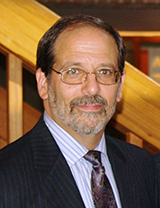
UConn School of Medicine
Blood-Brain Barrier, Neuroinflammation
The focus of our laboratory is the microvasculature of the central nervous system (CNS), and the role it plays in neuroinflammatory and neurodegenerative disease of CNS. To this end, our group employs high-resolution 3D fluorescence imaging to provide qualitative and quantitative detail of leukocyte extravasation into the CNS and the vascular changes that accompany this process. Additionally, we have developed methods to couple laser capture microdissection (LCM) to several downstream profiling platforms in order to gauge gene and protein expression in situ. The LCM Core facility is under the directorship of Dr. Pachter, and is located adjacent to his laboratory for use by all UConn personnel.

The Jackson Laboratory for Genomic Medicine
Cancer Immunology, Genomics, Human Immunology, Myeloid Cells, Vaccines
Dr. Palucka's research is focused on:
- Understanding how vaccines work and defining the immune mechanisms underpinning successful vaccination.
- Developing strategies for neutralizing tumor-promoting inflammation, broadening T cell repertoires (via vaccination), and elucidating the mechanisms by which immune cells organize tumor micro-environments to regulate T cell activity.
- Identifying new targets for combination therapies in cancer that overcome resistance to current treatments and promote long-term cancer control.
UConn School of Medicine
Pulmonary Medicine, Electronic Nicotine Delivery Systems, E-Cigarettes, Asthma
Along with expert in the field of tobacco and nicotine dependence, I am currently doing research on the effects of electronic cigarettes in the respiratory system. It is clear that understanding how e-cigarettes lead to disease is urgently needed as the prevalence of e-cigarette use continues to increase among adolescents and young adults, and the numbers of reported pulmonary related illness cases associated with the use of e-cigarettes continues to grow. I am planning to examine the transcriptome of the induced sputum and circulation of e-cigarette users to identify potential biological pathways affected by exposure to this products.

UConn
Blood Pressure, Cardiometabolic Health, Cardiovascular Disease, Exercise, Hypertension, Obesity, Physical Activity
A focus of Dr. Pescatello's research has been on exercise prescriptions to optimize health benefits, particularly among adults with hypertension. In an effort to find the most effective exercise prescription for hypertension and other related chronic diseases and health conditions, Dr. Pescatello's research group has identified clinical and genetic determinants of the blood pressure response to acute and chronic endurance and resistance exercise interventions among adults in the early stages of hypertension that hold promise for further exploration and confirmation. She was site-PI at UConn on the largest resistance exercise genomics study conducted to date, Functional Single Nucleotide Polymorphisms Associated with Human Muscle Size and Strength (or FAMuSS), and PI on one of the largest acute endurance exercise studies examining the influence of genetic variants on postexercise hypotension among adults with high blood pressure.

UConn School of Medicine
Epigenetics, Genome Architecture, non-coding RNA, Gene Regulation, Epigenomics, Pluripotency, XCI and X-linked Disorders
Our research interests center on how chromosome topology, non-coding (nc) RNAs and chromatin modifiers orchestrate gene expression in mammals. To this end, we are developing scalable genomic methodology to learn how DNA is concurrently transcribed, replicated and packaged inside the nucleus. The process of mammalian sex chromosome dosage compensation, namely X chromosome inactivation (XCI) serves as a particularly informative model for these questions: XCI is driven by the long ncRNA Xist, and combines changes in nuclear architecture, chromosome topology, chromatin compaction and nucleosome-and nucleotide-level epigenetic cues. In this context, we would like to understand the molecular mechanisms that allow a select group of X-linked genes to escape XCI, and continue expression from the otherwise inactive X chromosome. This effort is relevant to etiology of Turner Syndrome (karyotype 45, X or XO), and builds on our computational approaches to resolving parental alleles in high-throughput sequencing data.

UConn
Epigenetics, Chromatin, Histones, IncRNA, X chromosome inactivation
My research interests are focused on epigenetics, a research theme that explores mechanisms that regulate gene expression beyond the level of simple DNA sequence. Specifically, we are interested in the composition of specialized chromatin as it is modulated by long non-coding RNA (lncRNA), histone modifications, and DNA methylation, and the involvement of these mechanisms upon gene expression. Together, these epigenetic mechanisms which are rooted in chromatin structure and dynamics,and have important impacts on the behavior and differentiation of stem cells, X chromosome inactivation, developmental biology, and human disease processes. My lab is also interested in teratology and ways to manipulate epigenetic states in cells through the use of novel pharmacological agents.
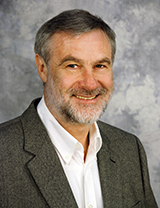
UConn School of Dental Medicine
Genetics, Bone Disorders, Wound Healing, Keloids, Mutation Analysis, Skeletal Biology, Exome Sequencing, Molecular Genetics
We study human genetic disorders in which dermal wound healing and bone remodeling are disrupted. We study the genetic origin and take multidisciplinary approaches to identify mechanisms that lead to those disorders. Disorders of interest include for example keloid formation, craniometaphyseal dysplasia, aplasia cutis congenita and cherubism.
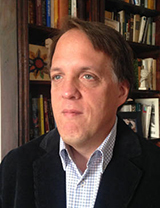
The Jackson Laboratory for Genomic Medicine
Computational Biology, Bioinformatics, Genome Sequencing, Genomics, Medical Genetics
Peter Robinson studied Mathematics and Computer Science at Columbia University and Medicine at the University of Pennsylvania. He completed training as a Pediatrician at the Charité University Hospital in Berlin, Germany. His group developed the Human Phenotype Ontology (HPO), which is now an international standard for computation over human disease that is used by the Sanger Institute, several NIH-funded groups including the Undiagnosed Diseases Program, Genome Canada, the rare diseases section of the UK's 100,000 Genomes Project, and many others. The group develops algorithms and software for the analysis of exome and genome sequences and has used whole-exome sequencing and other methods to identify a number of novel disease genes, including CA8, PIGV, PIGO, PGAP3, IL-21R, PIGT, and PGAP2.

The Jackson Laboratory for Genomic Medicine
Single Cell Technologies, Reproductive Biology, Cancer, Stem Cell Biology
My lab develops and implements single cell technologies to enable the measurement of biological systems at their elemental unit, the individual cell. I am broadly interested in the evolution, development, and homeostasis of cellular phenotypes in normal and diseased states. A disease of particular focus is cancer where cellular dis-regulation is the norm, and thus the application of single cell technologies may have a profound impact on our understanding of this disease. In normal systems, I have a particular interest in understanding the evolution and development of the human embryo, maternal-embryo interactions, and how pluripotent stem cell models can be harnessed to study this area of reproductive biology.

Yu-Hui Rogers
The Jackson Laboratory for Genomic Medicine
I currently serve as the Site Director at the Jackson Laboratory for Genomic Medicine. Prior to joining the Jackson Laboratory (JAX) in July of 2012, I was the Vice President of Core Technology Development and Services at the J. Craig Venter Institute (JCVI). I have been working in the field of Genomics for the past 14 years. My technical areas of expertise include development, implementation, and management of large scale Genomics facilities and nucleic acid technology development. At JCVI, I played a key role in the management and execution of large scale genomics and metagenomic sequencing projects and programs, including the Human genome sequencing project, NIAID funded Genomic Sequencing Centers for Infectious Diseases program, Global Ocean Sampling (GOS) project and the NIH Roadmap Human Microbiome Project (HMP). Before joining the Venter Institute, I was the Manager of Sequencing Research and Development at Celera Genomics. I was instrumental in the development and implementation of the Celera high-throughput sequencing pipeline that allowed the human genome sequence to be completed in 14 months.

UConn School of Medicine
Aging, Longevity, Drosophila Melanogaster, Indy, rpd3
My laboratory has been performing aging studies by using Drosophila as a model system. I have been actively involved in identification and determination of the role of several genes in Drosophila health and longevity, including Indy, rpd3 and dSir2. Reduction of the Indy gene activity in flies extends health and life span by altering energy metabolism in a manner similar to CR. Indy reduction protects against negative effects of age and high calorie diet (HCD) on metabolism and insulin resistance. The current goal of my research is to identify and characterize molecular mechanisms that underline beneficial effects of INDY reduction.

UConn School of Medicine
Cancer Chemoprevention, Bioactive Lipid Signaling, Inflammation Cancer, Colorectal Cancer, Pancreas Cancer, Mouse Genetic Models, Epigenetics, Lipid Signaling, Microbiome, Targeted Transcriptomics, Nutritional Epidemiology
My laboratory has a longstanding interest in the molecular events that accompany early gastrointestinal neoplasia. We apply powerful and exquisitely sensitive cutting-edge technologies to understand the earliest cellular changes that precede cancer, including NextGen sequencing, computational biology, analysis of the microbiome, proteomics and cell biology. We are also actively developing mouse genetic models to recapitulate human neoplasia, with a focus on colorectal and pancreatic cancers. A major effort of our laboratory is to develop natural products that may be used to interrupt the processes of cancer initiation and progression.

UConn School of Medicine
Pharmacogenomics, population genetics, molecular diagnostics, clinical decision support, bioinformatics
I have been an innovator and physician scientist in biomedical research and advocate of personalized health for 30 years. My current research focuses on pharmacogenetics of psychotropics and analgesics, analysis of global health and disparities by genomic admixture, and genetic markers of opioid dependence and substance use disorders. In my research career, I have developed systems for DNA- guided medicine based on genomics and clinical informatics. I have pioneered physiological genomics based on multi-gene DNA markers to the diagnosis of disease and prediction of human physiological responses to a wide array of clinical treatments (pain, neuro-psychiatric drugs, brain imaging, cardio-metabolic drugs, exercise, diet, hospitalization).This research enables the synthesis of gene markers for physiological, biochemical and cellular function, environmental responses, and disease susceptibility.
University of Connecticut
Plant Genomics, Populations Genomics, Plant Evolution
Our research is on the genetic and phenotypic underpinnings of adaptation of organisms to variable environments. One focus has been on the evolution of phenotypic plasticity, i.e., the ability of a single genotype to produce multiple phenotypes in response to different environmental conditions (aka the reaction norm). How are phenotypic changes controlled genetically, and how do differences in reaction norms arise? A second focus has been to expand the view of the reaction norm to encompass the developmental process itself – i.e., viewing development as a series of responses to changing internal (environmental) signals. Current research is investigating the population genomics of a widespread species to understand whether local adaptation is achieved via genetic specialization or phenotypic plasticity.

University of Connecticut
Circuit and Behavioral Neuroscience, Norepinephrine Hindbrain Neurons, Locus Coeruleus, Viral and Intersectional Genetic Strategies, In vivo Calcium Imaging, In vivo Neurophysiology
The focus of the Sciolino lab is to define the connectivity and function of hindbrain norepinephrine (NE) circuits that regulate motivational processes related to feeding, reward, and emotion. We take a multidisciplinary approach to study the neurobiology of motivation using tools spanning genetic, molecular, cellular, & systems neuroscience. Our research will 1) define the role of locus coeruleus norepinephrine (LC-NE) neurons in feeding and reward 2) map their neural circuits, and 3) uncover their role in the biology and treatment of obesity, addiction, and anxiety. The tools and approaches that we use are intersectional genetics, fiber photometry, opto- and chemogenetics, cellular electrophysiology and behavioral and metabolic monitoring.

UConn
Gene Regulatory Pathway Analysis, DNA Sequence Analysis, Cancer Genomics Data Analysis, Biological Databases, Knowledge-Based System, Visual User Interface
Dr. Shin's research area includes analyzing high-throughput assay data at genome-wide by combining what is known about biological entities (prior knowledge) and what is newly obtained from the high-throughput experiments. Specifically, he has been developing a novel gene regulatory pathway analysis system which is capable of checking consistencies between experimental data and known gene/protein interaction networks. This system is not only useful in identify biological signatures in terms of numerically quantifiable measures but also in terms of visually depicted abstract/detailed pathway diagrams intuitively presented to the bench scientists. He employs advanced data mining techniques for generating signature measures as well as abstract data visualization.

UConn
Systems Biology, Metabolic Engineering, Machine Learning, Computational Biology, Modeling, Optimization, Simulation
The Srivastava Lab works at the intersection of systems biology, metabolic engineering, and applied machine learning. Our group leverages transcriptomic, proteomic, and metabolomic data to understand and manipulate complex biological systems. Applications span the biomedical, biotechnological, and environmental arenas.

The Jackson Laboratory for Genomic Medicine
Diabetes and Obesity, Genetics, Genomics, Epigenomics, Non-Coding Variation, Single Cell Transcriptomics, Aging, CRISPR/Cas9 (Epi)Genome Editing
Type 2 diabetes is a disease of genes and environment. My laboratory studies the epigenome of human pancreatic islets and their developmental precursor cells. One aim is to use the epigenome as a read-out of effects of type 2 diabetes genetic variants on islet gene expression programs and function. Emerging evidence suggests that normal or disease-predisposing conditions can actually alter a cell's epigenome and lead to abnormal cellular functions. To this end, my lab is investigating how the islet epigenome is altered under different stimulatory and stress conditions. Finally, we are pursuing targeted modification of cells (epi)genomes to facilitate production of bona fide pancreatic islet cells from pluripotent stem cells or other terminally differentiated cells.

Linda Strausbaugh
UConn
Mycobiome, Fungal Nomenclature, DNA Based Identification
Linda Strausbaugh’s broad research interests currently focus on the commensal and pathogenic fungi in the human oral cavity and other biocompartments. Areas of concentration include identification of taxa by metagenomic methods, nomenclature, and inferences of functional roles. She also participates in national initiatives to build a STEM workforce at the graduate level.
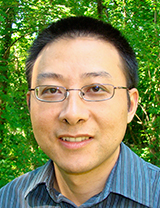
UConn
Ovulation, Ovarian Cancer, Reproductive Glands, Genetics
Sun lab is interested in reproductive organ formation, physiological function, and gynacological diseases. Using the genetic model organism Drosophila melanogaster, we are investigating the fundamental mechanism of ovulation. We hope to identify novel therapeutic targets for ovulation-related diseases and to develop novel contraceptive medicines.
UConn
Vaccines, Immunology, Infectious Diseases
The research in the Szczepanek lab is focused on understanding dysfunctional immunity in Sickle Cell Disease (SCD). More specifically, we use genomics techniques to better understand pathways that are impaired in B-cells from those with SCD in response to vaccination.
UConn
Dr. Tian studies molecular embryology and assisted reproductive biotechnology. Specifically research projects in her lab include epigenetic changes in pre-implantation bovine embryos, genetic engineering, cloning by nuclear transfer and in vitro fertilization. Recently she developed interests in sustainability and applies natural compounds to control mycoplasma in domestic animals.

The Jackson Laboratory for Genomic Medicine
Computational Biology (or Bioinformatics), Genomics, Epigenomics, Aging
Epigenomic mechanisms vary between cell types, individuals and organisms and function across short, such as cell differentiation, and long, such as human aging, timescales. The diversity in biological response that results from epigenomic variation provides a wide range of opportunities for knowledge discovery and applications in genomic medicine. With these objectives in mind, I launched my laboratory at The Jackson Laboratory for Genomic Medicine (JAX-GM) in August 2013. My lab aims to advance our understanding of the dynamics of epigenetic marks, the implications of these marks on gene regulation and their influence in human aging and diseases. We approach this problem through conducting comparative computational analyses of high-throughput biological datasets and by developing novel computational approaches and solutions for mining these complex datasets.

The Jackson Laboratory for Genomic Medicine
Cancer Biology, Genomics, Tumor Microenvironment, Brain Tumors, Immunology, Neuroscience
My lab is devoted to understanding how interactions between tumor cells and the microenvironment shape the evolution of diffuse gliomas, the most common malignant brain tumors in adults. To accomplish this, the laboratory relies on data-driven techniques that integrate genomic, transcriptomic, and spatial information from human tissue samples. Projects in my lab rest on the central hypothesis that disrupting the environment in which a tumor develops will slow the tumor’s ability to grow and sensitize it to therapy. By deciphering these cellular interactions, my lab aims to generate novel discoveries that can be harnessed to improve brain tumor treatments and prolong patient survival.
UConn School of Medicine
T cell, Cytokine, Costimulation and Inflammation
EMy laboratory studies many aspects of the immune system and is developing therapeutic approaches to control immunity. A goal of our studies to understand how T cell costimulation and toll-like receptor stimulation trigger different inflammatory processes. Throughout the course of this work several models of innate cell and T cell function have been developed, and the heart of this work is to develop new approaches to boost beneficial T cell responses but also to block undesired responses as well.
![]()
UConn School of Medicine
Computational Systems Biology, Computational Systems Medicine, Mathematical Biology
I am an interdisciplinary scientist, with a background in mathematics and computational systems biology. I specialize in the design, implementation and application of algorithms for the modeling analysis, simulation and control of biological systems. Biological systems of my interest include gene regulatory, protein-protein interaction and intracellular signaling networks.

The Jackson Laboratory for Genomic Medicine
Brain tumors, Sequencing, Computational biology
We are a computational cancer biology lab with a research focus on the analysis of cancer genomics data to improve our understanding of cancer biology. We have a specialized research interest in understanding disease progression of brain tumors, particularly glioblastoma and glioma. We mostly use high throughput sequencing and computational analysis in our research.

UConn School of Medicine
Microbiome, Diet, Autoimmune
By utilizing multi-OMICS and experimental approaches, Dr. Zhou studies the Diet-Gut microbiome-Brain interaction in multiple sclerosis in patients and mice, an autoimmune disease in central nervous system.

UConn School of Medicine
Cancer Biology, RNA biology, Precision Medicine, Leukemia
Our laboratory is committed to understanding molecular mechanisms that drive disease initiation and therapy resistance in leukemia that may ultimately lead to the development of better therapies. Our laboratory uses a multidisciplinary approach by integrating genomics, RNA biology, and immunology. We aim to develop and apply state-of-the-art genomic approaches to profile and genetically perturb cancer cells to understand gene regulatory networks that govern transcriptional and post-transcriptional regulation in leukemia cells.
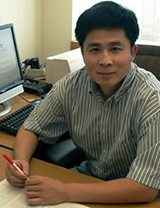
UConn
Plant Stem Cells, Cell Differentiation, Transcriptome Analysis, Gene Regulation
The main purposes of research in the Wang Lab are to understand (pro-)cambium development and vascular tissues differentiation, to elucidate cell wall formation and to use basic research findings to develop novel feedstock crops for biofuel production. Genetics, biochemistry, genomics and molecular biological approaches are utilized to decipher the mechanisms of vascular development and secondary cell wall biosynthesis.
UConn School of Medicine
Inflammation, Immunity, Cancer
Research in my lab focuses on the role of interleukin-17 (IL-17) family cytokines in colorectal cancer development and therapeutic intervention. IL-17 plays important roles in immunity against invading pathogens and in chronic inflammation of autoimmune diseases. IL-17 signaling also drives the development of colorectal, breast, pancreatic, and prostate cancers. Our and other people’s previous studies have shown that IL-17 signals to both tumor cells and their environment. Direct engagement of IL-17 promotes tumor cell proliferation and survival, whereas IL-17 signaling on stromal and immune cells seems to promote tumor-associated inflammation and suppress anti-tumor immunity. Despite these breakthroughs, the mechanism by which IL-17 regulates tumor inflammation and immunity response remained largely elusive. We employ mouse models of colorectal cancer to study the role of IL-17 signaling in T cell regulation and tumorigenesis in the gut.
UConn School of Medicine
Fibroblasts, Extracellular Matrix, Proteomics, Single Cell RNA Sequencing, Mass Cytometry, Inflammation, Kidney Fibrosis
Our research focuses on elucidating the cellular and molecular mechanisms underlying the pathogenesis of kidney injury and fibrosis. Using cDNA microarray technology, we discovered that chemokine CXCL16 is induced in the kidney during the development of renal fibrosis. We further demonstrated that the presence and accumulation of bone marrow-derived fibroblasts from a CD45+ mononuclear precursor population are driven by induction of CXCL16 and its receptor CXCR6. Recently, we have shown that JAK3 and STAT6 signaling pathway plays a critical role in bone marrow-derived fibroblast activation. More recently, we have identified novel Smad3 interacting proteins using mass spectrometry. We plan to utilize single cell RNA sequencing and CyTOF to further understand the cellular and molecular mechanisms of kidney injury and fibrosis.

UConn
Invertebrate, Bivalve, Physiology, Toxicology, Microbiome
My laboratory group is investigating the genetic and functional diversity of the microbiome associated with invertebrates to understand its involvement in host physiological processes. Prokaryotic organisms are ubiquitous and essential to all habitats on Earth. Within the marine environment, bacteria sustain the base of food webs, drive a manifold of biogeochemical processes, and through symbioses, influence the evolution of multicellular life. For example, bivalve molluscs are important members of coastal ecosystems and have commercial value, yet their microbiomes remain largely unexplored. We are interested in the role of gut and gill microbiota in bivalve toxicology, specifically involving anthropogenic pollutants like microplastics, nanoparticles, and pesticides. We utilize traditional bivalve husbandry and toxicological methods along with high-throughput sequencing and culture-based microbial techniques to conduct this research.
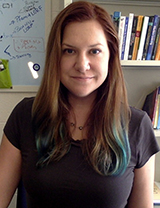
UConn
Genome Biology, Population Genomics, Transcriptomics, Plant Genomics, Computational Biology, Software Development
Our research focuses on the computational analysis of genomic and transcriptomic sequences from non-model plant species. We develop approaches to examine gene finding, gene expression, gene annotation, and conserved element identification, through machine learning and computational statistics. We use these novel methods to address questions related to genome biology and population genomics. We also develop web-based applications to integrate data across domains and facilitate the researchers ability to analyze, share, and visualize genotype, phenotype, and environmental data.

The Jackson Laboratory for Genomic Medicine
Transcription regulation, Epigenetics, Genome Technology and Chromatin Organization
Wei’s primary research focus is to develop genomic and sequencing technologies; apply them to interrogate genomic and epigenomic elements pertinent to genome function and biology. The goal is to uncover system biology networks in lineage specification processes and organism responses to stress and environment. We are interested to decipher regulatory networks of key functional modulators and their interactions with “non-coding functional elements” in mammalian cell genomes and their dynamics in developmental process. We believe that such knowledge will provide fundamental understanding in the role of genome organization in transcription regulation, differentiation and disease mechanisms.

The Jackson Laboratory for Genomic Medicine
Microbiome, Infectious Disease, Cancer, Genetics, Genomics, Immune Disorders, Aging, Diabetes and Obesity, Complex Traits, Bioinformatics, Computational Biology
Dr. George Weinstock is a Professor and Director of Microbial Genomics at the Jackson Laboratory for Genomic Medicine where he established a group devoted to genomic studies of infectious diseases and the human microbiome. The goal of the metagenomics projects is to determine the role of the microbiome in health and infectious disease with the aim of providing new diagnostic and therapeutic approaches. Dr. Weinstock's group has played a leading role in the NIH Human Microbiome Project including both basic science and clinical studies.

UConn School of Medicine
Protein Biochemistry, Drug Discovery, DNA Replication, DNA Recombination and Repair, Protein Homeostasis
My laboratory works on Herpes Simplex Virus, a ubiquitous human pathogen found in over two thirds of the world population. We use viral genetics, cell biology, biochemistry as well as molecular and structural approaches to elucidate aspects of the Herpes Simplex Virus life cycle. One of our goals is to identify antiviral targets which can be exploited to develop strategies for controlling viral infections. We primarily focus of two questions: 1) How does the virus interact with its host and overcome a hostile environment? And 2) How does it replicate its genetic material.

UConn
Chemical Biology, Molecular Biology, Pharmacology, Immunology, Cancer, Drug Discovery
A major goal of our research is to discover and investigate novel cancer therapeutics. We are especially interested in directing immune cells to fight cancer. Our research also addresses fundamental scientific questions of how cells interact with other cells and how cells metabolize phospholipids. We believe that altering our model systems with experimental small molecules will lead to an enhanced understanding of cellular functions as well as the discovery of novel drugs and drug targets. As part of the UConn ISG, we are interested in using genomic techniques to understand the individualized immune response to cancer and how it may be affected by chemotherapy.

UConn
Bioinformatics, Genomics, Population Genetics
My laboratory studies algorithms in bioinformatics and computational biology. We mainly focus on computational problems in population genetics and evolution, and we analyze high-throughput sequencing data.

UConn School of Medicine
Skeletal Regeneration, Single Cell Transcriptomics, Osteogenic Mesenchymal Stem Cells, Osteogenesis Imperfecta
Technology for inducing somatic cells become pluripotent stem cell (iPSC) was a great breakthrough reported in early 2000, and become more advanced and efficient after years. We have implemented this technology in our laboratory and generated lines of iPSC from normal human subjects and subjects with osteogenesis imperfecta (OI), a disease with brittle bone. The disease-causing gene are either encoding type 1 collagen, or the proteins that involved in type 1 collagen modification, processing, and folding. But most OI patients (85-90%) carried collagen 1 genes mutation that may cause the protein synthesis with either missense or early termination, which determine the OI clinic severity. We have collected dermal fibroblasts from Type I (mild) and Type III/IV (Moderate) OI subjects and generated corresponding iPSC. With our established in vitro iPSC differentiation protocol, we have successfully generated iPSC derived osteogenic mesenchymal stem cells (iPSC-MSC) from normal subjects, which formed human cartilage and bone in mouse in vivo. The critical component in our in vitro differentiation protocol is the endothelia growth media (EGM). Replace EGM with DMEM, the cells, even though 80 to 90% expressed MSC surface marker, but failed to form human cartilage and bone. Meanwhile, the cartilage and bone formation by Type III/IV OI iPSC-MSC are substantially reduced. Our goal is to understand what are the differences between cells differentiated with EGM vs DMEM at single cell sequencing gene profile level, which will help us to identify the critical genes in the osteogenic iPSC-MSC populations, that can further lead us to understand the osteogenic MSC. Comparing the single cell sequencing gene profile of normal and OI iPSC-MSC can help us further understand the disease mechanism, searching for potential cell-based treatment of OI, and establishing osteogenic improvement drugs screening model system.
UConn School of Medicine
Aging, Cellular senescence, Personalized Medicine, Gene expression, and Genomic science
My research interest involves the understanding of underlying mechanism of age and metabolism related tissue dysfunction and diseases and finding therapeutic targets for combating with these diseases. My lab employs novel animal models and human cell transplantation models to study the underlying mechanisms by which senescent cells induce tissue dysfunction. My long term career goal is to develop interventions to enhance healthspan and lifespan in aging populations.
University of Connecticut
Symptom Cluster, Cancer, Metagenomic, Transcriptome
My research focuses on cognitive function and symptoms cluster in cancer patients. Using multi-omics approach, I am specifically interested in understanding the impact of chemotherapy on cognitive impairment and persistent fatigue in patients with cancer.

UConn
Mass Spectrometry, Quantitative Proteomics, Analytical Chemistry, Biomarkers and Precision Medicine, Membrane Proteins
Biological mass spectrometry and bio-analytical chemistry for accurately and precisely measuring proteome expression and activity. Mass spectrometry to validate and quantify biomarkers. Targeted proteomics to investigate expression, turnover, and structure of membrane proteins, in particular cystic fibrosis transmembrane conductance regulator. Mass spectrometry of lipids and lipopeptides.

UConn
Genetics, Development, and Evolution of Flower Diversity; Genetic and Genomic Bases of Adaptation and Speciation; Transposable Elements
We are interested in how and why organisms evolve so many beautiful colors and forms in nature and we study flower diversification as a representation of the general problem of phenotypic evolution. We have developed many genetic and genomic resources and functional tools in a classical ecological and evolutionary model system, monkeyflowers (Mimulus), so that we can integrate hard-core genetics and genomics, developmental biology, and evolutionary ecology to address this problem. The specific questions we ask include: What are the genes underlying the dazzling variation of flower color and shape; how do these gene products regulate the production, transportation, modification, and degradation of pigments to generate floral color patterns; how do they regulate the division, elongation, and polarization of cells to make flower shapes; how does evolution tinker with these genes to generate different phenotypes among species; what is the adaptive significance of the diverse flower colors and shapes in their ecological environments?
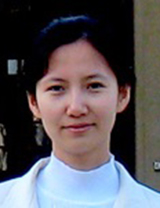
UConn
Research interests lie in development and application of statistical and computational methods to address scientific problems in genomics, systems biology, and complex diseases. Current methodology research topics include statistical learning and inference, high-dimensional correlated data analysis, graphical models, and network analysis.
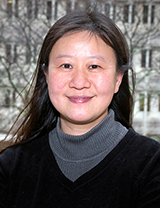
UConn School of Medicine
Obesity, Hematipoiesis, Stem Cells, microRNAs, Inflammation
Our research program focuses on understanding the link between immunes and adipose tissue in normal and obese conditions. Incorporating animal models with OMICs-technologies, my laboratory is devoted to understand the mechanisms underlying epigenetic factors, including histone modification and non-coding RNAs, in controlling immune cell functions. We have developed various transgenic models and ex vivo characterization systems to critically assess the crosstalk between immune and metabolic compartment in the adipose niche and bone marrow in normal and disease (excess nutrient) states.

UConn School of Medicine
Microbiome, Diet, Autoimmune
By utilizing multi-OMICS and experimental approaches, Dr. Zhou studies the Diet-Gut microbiome-Brain interaction in multiple sclerosis in patients and mice, an autoimmune disease in central nervous system.







